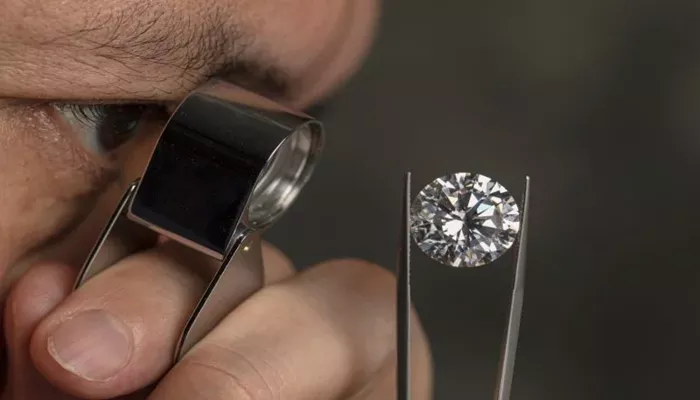The Gemological Institute of America (GIA) is changing how it reports on lab-grown diamonds once again.
This time, the lab is going back to a more general way of describing these stones.
On Monday, GIA announced that starting later this year, it will stop using the detailed color and clarity terms developed for natural diamonds when grading lab-grown diamonds.
Instead, GIA will first confirm that a diamond is lab-grown. Then, it will evaluate its color, clarity, and finish to decide if the stone fits into one of two categories: “premium” or “standard.”
If the diamond does not meet the minimum quality standards, it will not receive any designation from GIA.
The lab said the change responds to the narrow range of color and clarity found in lab-grown diamonds today. This narrower range is due to ongoing improvements in diamond-growing technology.
GIA also stated that this new system will help buyers understand the key differences between natural and lab-grown diamonds. It will build consumer confidence and help people make better-informed purchase decisions.
Since 2022, 95 percent of lab-grown diamonds submitted to GIA for grading have been colorless, meaning they would receive a D, E, or F grade. Additionally, 98 percent have had a clarity grade of VS1 or higher.
Tom Moses, GIA’s Executive Vice President and Chief Laboratory and Research Officer, said, “Like other man-made gems, we expect lab-grown diamonds to keep growing in popularity.”
He added, “More than 95 percent of lab-grown diamonds on the market fall within a very narrow color and clarity range. Because of this, it no longer makes sense for GIA to use the grading terms made for natural diamonds.”
Moses’ comments echo what he said in a 2016 interview with National Jeweler. Back then, GIA used broader terms for lab-grown diamonds. For example, stones in the D-F color range were called “colorless,” and those in G-I were “near colorless.” The lab also used only four clarity grades for lab-grown diamonds: VVS, VS, SI, or I. This contrasts with 11 clarity grades for natural diamonds.
At the time, Moses explained that lab-grown diamonds do not have the same variety in color and clarity as natural diamonds. So, applying the natural diamond grading system—which was created in the 1940s for mined diamonds—did not fit well for lab-grown stones.
GIA started grading lab-grown diamonds in 2006.
The first major change came after the Federal Trade Commission updated its Jewelry Guides in 2018. The update removed the word “synthetic” from the recommended terms for lab-grown diamonds.
Following this, in April 2019, GIA renamed its “Synthetic Diamond Grading Report” to the “Laboratory-Grown Diamond Report.”
At that time, the reports included the standard color, clarity, and cut scales, but only for reference. GIA did not grade lab-grown diamonds the same way as natural ones.
However, in August 2020, GIA announced it would start assigning the same specific color and clarity grades to both natural and lab-grown diamonds. This change reflected growing acceptance of lab-grown diamonds in the market.
Now, almost five years later, GIA is changing direction again.
This time, the lab is moving to even broader terms than before. Instead of using “colorless” or “near colorless” and limited clarity grades, GIA will classify stones as either “premium” or “standard,” based on color, clarity, and finish together.
GIA said it is still working on pricing and submission rules for this new grading service. It plans to share more details in the third quarter.
Until then, existing GIA reports for lab-grown diamonds remain valid.
The announcement did not say whether the reports or the new grading system will have a new name.
It also did not mention if changes will be made to how GIA grades the other two Cs—carat weight and cut. Cut is an important factor that depends on the manufacturing process and can vary widely for both natural and lab-grown diamonds.
GIA confirmed that its current grading services for lab-grown diamonds will stay available until the new descriptive system is finalized later this year.
Related topics:
- GSI Opens New Laboratory in Bangkok, Thailand
- Stephanié Cachard Brings Modern Alchemy to Lebanese Jewellery
- David Allouche Joins Grandview Klein Diamonds as Senior Sales Executive


